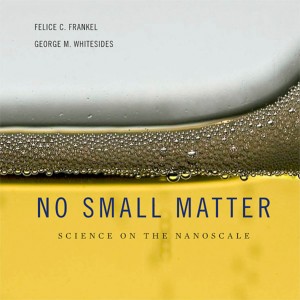Just when I was thinking that the Canadian nanotechnology scene was slowing down there’s this: A research team at the École Polytechnique de Montréal (Québec) has announced that they’ve trained bacteria to build structures shaped like pyramids. From the news item on Nanowerk,
Faster than lion tamers… More powerful than snake charmers… Make way for the bacteria trainers! Professor Sylvain Martel and his team at the École Polytechnique de Montréal NanoRobotics Laboratory have achieved a new world first: “training” living bacteria to build a nanopyramid.
These miniature construction workers are magnetotactic bacteria (MTB): they have their own internal compasses, allowing them to be pulled by magnetic fields. MTB possess flagella bundles enabling each individual to generate a thrust force of approximately 4 picoNewtons. Professor Martel’s team has succeeded in directing the motion of a group of such bacteria using computer-controlled magnetic fields. In an experiment conducted by Polytechnique researchers, the bacteria transported several epoxy nanobricks and assembled them into a step-pyramid structure, completing the task in just 15 minutes. The researchers have also managed to pilot a group of bacteria through the bloodstream of a rat using the same control apparatus.
Nanowerk also features a video of the magnetotactic bacteria at work.
Solar cell breakthrough?
More Canadian nano from Québec: a researcher (Professor Benoît Marsan) and his team at the Université du Québec à Montréal (UQAM) have provided solutions to two problems which have been inhibiting the development of the very promising Graetzel solar cell that was developed in the 1990s in Switzerland. From the news item on Nanowerk a description of the problems,
Most of the materials used to make this cell are low-cost, easy to manufacture and flexible, allowing them to be integrated into a wide variety of objects and materials. In theory, the Graetzel solar cell has tremendous possibilities. Unfortunately, despite the excellence of the concept, this type of cell has two major problems that have prevented its large-scale commercialisation:
– The electrolyte is: a) extremely corrosive, resulting in a lack of durability; b) densely coloured, preventing the efficient passage of light; and c) limits the device photovoltage to 0.7 volts.
– The cathode is covered with platinum, a material that is expensive, non-transparent and rare. Despite numerous attempts, until Professor Marsan’s recent contribution, no one had been able to find a satisfactory solution to these problem
Now a description of the solutions,
– For the electrolyte, entirely new molecules have been created in the laboratory whose concentration has been increased through the contribution of Professor Livain Breau, also of the Chemistry Department. The resulting liquid or gel is transparent and non-corrosive and can increase the photovoltage, thus improving the cell’s output and stability.
– For the cathode, the platinum can be replaced by cobalt sulphide, which is far less expensive. It is also more efficient, more stable and easier to produce in the laboratory.
More details about the work and publication of the study are at Nanowerk.
Northeastern University and nano regulatory frameworks
According to a news item on Azonano, Northeastern University’s (Boston, MA) School of Law will be hosting a two-day conference on international regulatory frameworks for nanotechnology.
Leading international experts on the global regulation of nanotechnologies, including scientists, lawyers, ethicists and officials from governments, industry stakeholders, and NGOs will join in a two-day conference May 7-8, 2010 at Northeastern University’s School of Law.
The conference will identify best practices that address the needs of industries, the public and regulators. Speakers include representatives from the U.S. Environmental Protection Agency, the Brazil Ministry of Science and Technology, the Korean government, the International Conference of Chemicals Management and National Science Foundation-funded university-industry collaborations.
I checked out the law school’s conference website and noted a pretty good range of speakers from Asia, Europe, and North and South America. It can’t have been easy pulling such a diverse group together. Unfortunately, I didn’t recognize names other than two Canadian ones: Dr. Mark Saner and Pat Roy Mooney.
Saner who’s from Carleton University (Ottawa, Ontario) co-wrote a paper cited by Peter Julian (Canadian Member of Parliament) as one of the materials he used for reference when drawing up his recently tabled bill on nanotechnology regulation. (You can see Julian’s list here.) Saner, when he worked with the Council of Canadian Academies, was charged with drawing together the expert panel that wrote the council’s paper on nanotechnology. That panel put together a report (Small is Different: A Science Perspective on the Regulatory Challenges of the Nanoscale) that does a thoughtful job of discussing nanotechnology, regulations, the precautionary principle, etc. and which you can find here. (As I recall I don’t agree with everything as written in the report but it is, as I noted, thoughtful.)
As for Pat Roy Mooney, he’s the executive director for the ETC Group which is a very well-known (to many scientists and businesses in the technology sectors) civil society group. There’s an Oct. 2009 interview with Mooney here where he discusses (in English) nanotechnology during a festival in Austria.
Robert Fulford and nanotechnology
Canadian journalist and author, Robert Fulford just penned an essay/article about nanotechnology for the National Post. From the article,
Fresh bulletins regularly bring news of startling developments in this era’s most surprising and perhaps most poetic form of science, nanotechnology, the study of the unthinkably small.
It’s a pleasure to read as a literary piece. Fulford mostly concerns himself with visions of what nanotechnology could accomplish and with a book (No small matter) by Felice Frankel and George Whitesides which I first saw mentioned by Andrew Maynard on his 2020 Science blog here.
